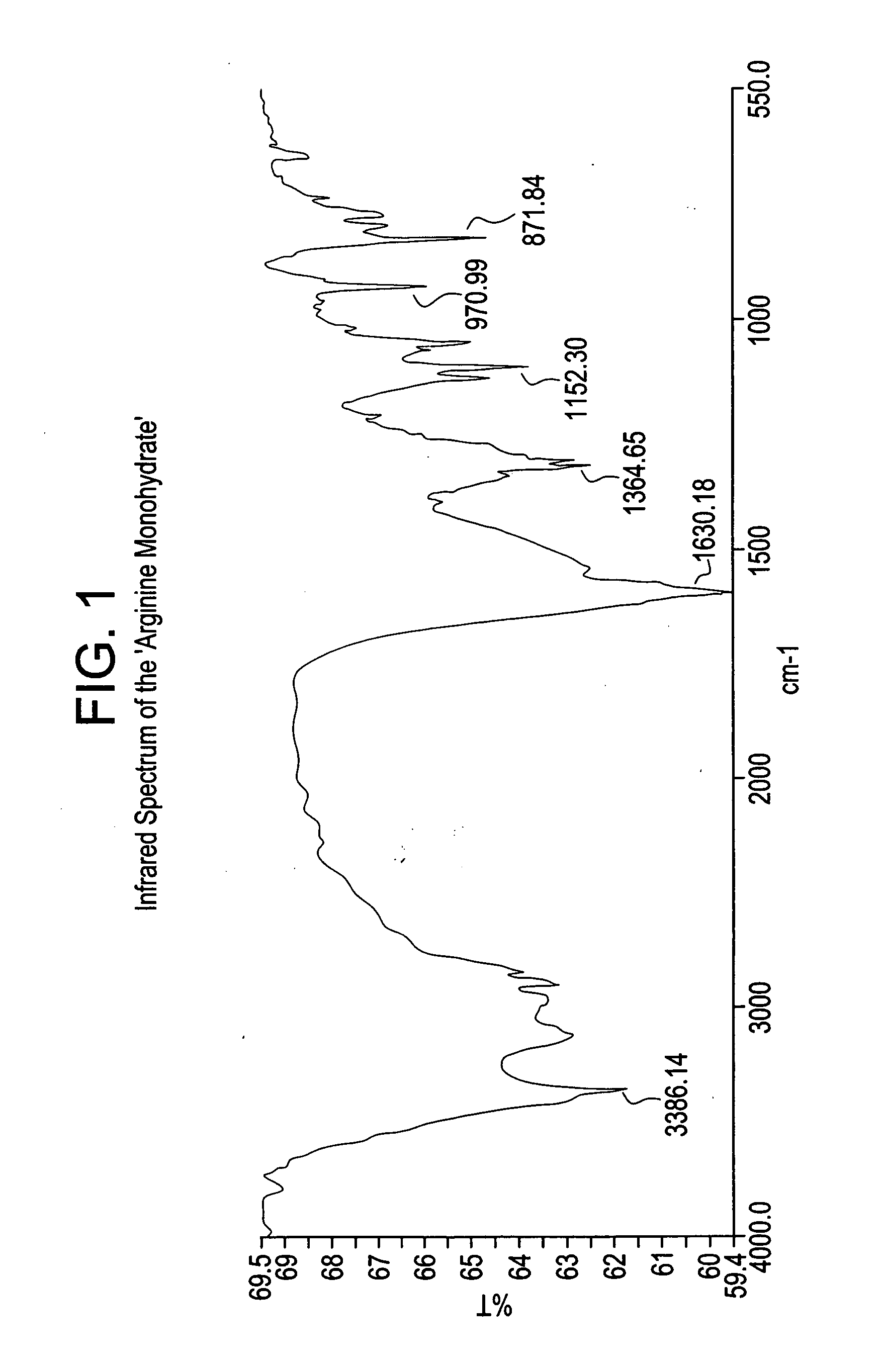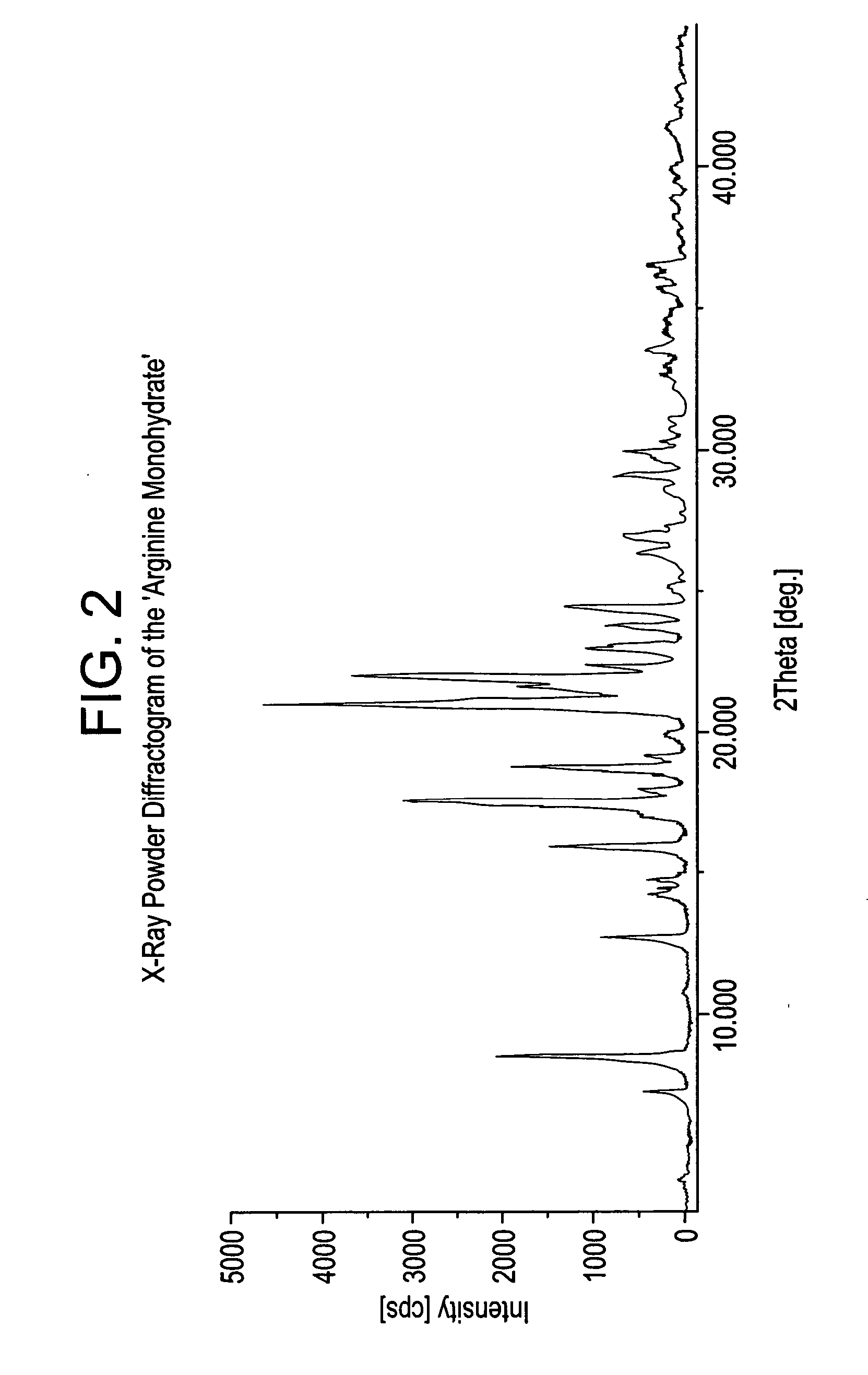Basic salts and monohydrates of certain alpha, beta-propionic acid derivative
a technology of beta-propionic acid and base salts, applied in the field of basic salts and monohydrates of certain alpha, beta-propionic acid derivatives, can solve the problems of complex formation, and inability to meet the requirements of dosage form, and achieve the effect of enhancing stability
- Summary
- Abstract
- Description
- Claims
- Application Information
AI Technical Summary
Problems solved by technology
Method used
Image
Examples
example 1
Preparation of [(S) 3-Methoxy-3-[4-{3-(4-methanesulfonyoxyphenyl) propylamino}phenyl]propionic acid] ((S)MP)
[0093]
[0094] Step (i)
[0095] To a suspension of LAH (22.1 g, 2.5 eq, 583 mmol) in dry THF (1.0 L), was added dropwise a THF (50 mL) solution of methyl 3-(4-hydroxyphenyl)propionate (21 g, 1.0 eq, 116 mmol) at RT. The reaction mixture was refluxed for 4-5 h. It was worked up by quenching with excess ethyl acetate followed by addition of water (23 mL), 15% aq. NaOH (23 mL) and water (70 mL) under controlled stirring and maintaining RT. To the workup mixture conc. HCl was added to adjust the pH at 7.0. It was then filtered through celite and washed with ethyl acetate. Combined filtrate was dried (Na2SO4) and condensed. Obtained residue was chromatographed (ethyl acetate / hexanes) to obtain 3-(4-hydroxyphenyl)propanol (17 g, 100%) as white solid.
[0096] Mp: 52-54° C.
[0097]1H NMR (CDCl3, 200 MHz δ: 1.78-1.86 (m, 2H); 2.63 (t, J=7.9 Hz, 2H); 3.67 (t, J=6.3 Hz, 2H); 6.74 (d, J=8.8 H...
example 2
L-Arginine salt of (s)-2-methoxy-3-[4-{3-(4-Methanesulfonyloxyphenyl) propylamino} phenyl]propionicacid in monohydrated form (Arginine salt monohydrate)
[0153] To a mixture of (S)-2-Methoxy-3-[4-{3-(4-methanesulfonyloxyphenyl) propylamino} phenyl] propionicacid (10 g) and DM water (30 ml), L-Arginine (0.426 g) were refluxed added to the reaction mixture at 25-30° C. in about 5 minutes under stirring and maintained the reaction mixture at 50-70° C. for 4-5 hours. Isopropanol (120 mL) was added to the reaction mixture at same temperature and heated to reflux temperature of the solvent, and maintained for 1-2 hours to get clear solution. Then cooled to 25-35° C. in about 5-6 hours and maintained for 24 hours under stirring at 25-30° C. The precipitated product was filtered, dried at 60° C. for 8-10 hours to afford pure L-Arginine salt of (S)-2-methoxy-3-[4-{3-(4-Methanesulfonyloxyphenyl)propylamino} phenyl] propionic acid in monohydrated form, as off white crystalline solid. (10 g, 90%...
example 3
L-Arginine salt of (S)-2-methoxy-3-[4-{3-(4-methanesulfonyloxyphenyl) propylamino} phenyl} propionicacid (Arginine salt)
[0159] (S)-2-Methoxy-3-[4-{3-(4-methanesulfonyloxyphenyl)propylamino} phenyl} propionicacid, (10 grams) and DM water (30 mL) were refluxed. L-Arginine (0.426 grams) was added to the reaction mixture at 25-30° C. in about 5 minutes and maintained at the same temperature for 4-5 hours. Isopropanol (120 mL) was added to the reaction mixture and continued stirring further for 2 to 4 hours. The precipitated product was filtered, dried at 60° C. for 8-10 hours and further refluxed with toluene to remove water azeotropically. Reaction mass cooled to 25-30° C. and filtered and washed with toluene, dried at 60-65° C. for 8-10 hours to afford the pure form of L-Arginine salt of (s)-2-methoxy-3-[4-{3-(4-methanesulfonyloxyphenyl) propylamino}phenyl} propionicacid, as off white crystalline solid. (10 grams, 90%)
[0160] Melting point 190-194° C.
[0161] Purity: 98.15% by HPLC.
[...
PUM
| Property | Measurement | Unit |
|---|---|---|
| temperature | aaaaa | aaaaa |
| temperature | aaaaa | aaaaa |
| 2θ±0 | aaaaa | aaaaa |
Abstract
Description
Claims
Application Information
 Login to View More
Login to View More - R&D
- Intellectual Property
- Life Sciences
- Materials
- Tech Scout
- Unparalleled Data Quality
- Higher Quality Content
- 60% Fewer Hallucinations
Browse by: Latest US Patents, China's latest patents, Technical Efficacy Thesaurus, Application Domain, Technology Topic, Popular Technical Reports.
© 2025 PatSnap. All rights reserved.Legal|Privacy policy|Modern Slavery Act Transparency Statement|Sitemap|About US| Contact US: help@patsnap.com



